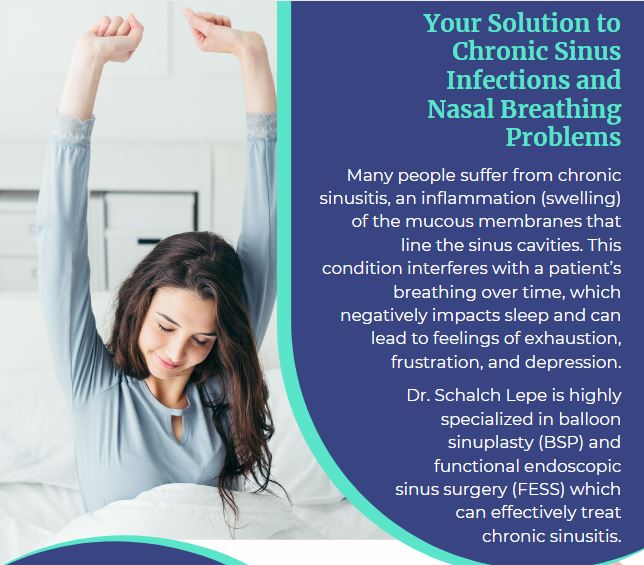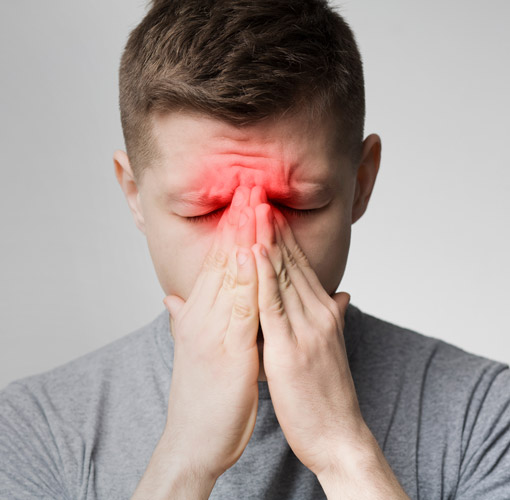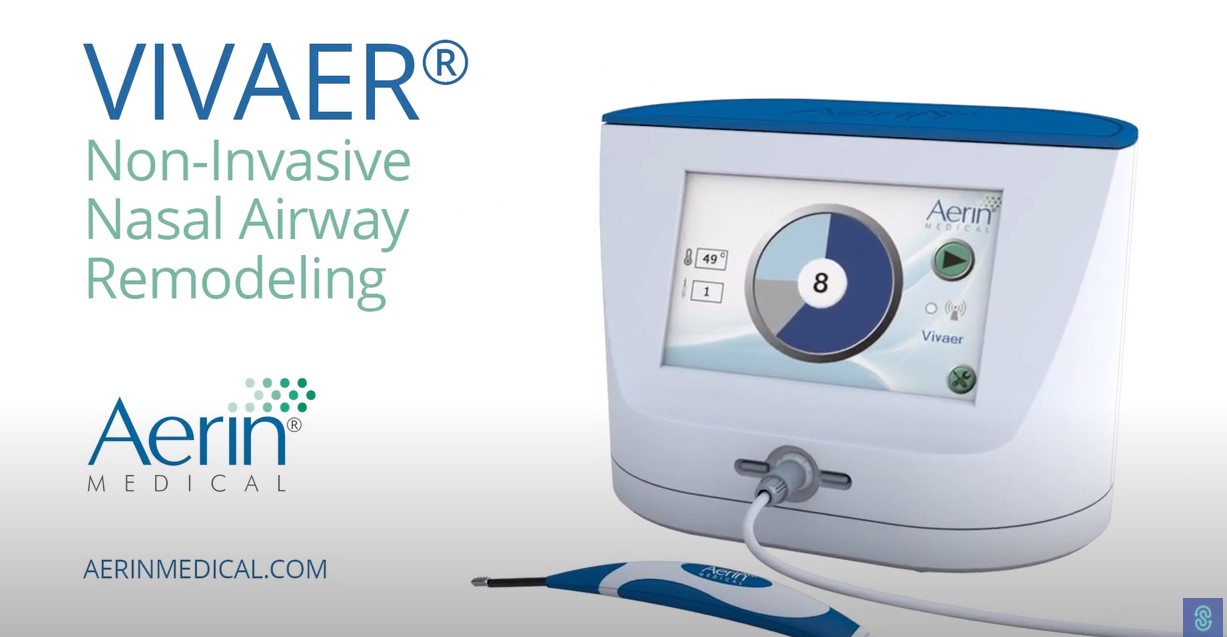Chronic Sinusitis Treatment San Diego, CA
Chronic sinusitis often feels like a persistent cold at the onset of the disease, but these symptoms can manifest into shortness of breath and exhaustion. If not properly treated, chronic sinusitis can impact a patient’s quality of life.
If you’re having trouble breathing through your nose, have a nasal drip, or sinus pressure around your eyes, cheeks, nose, and forehead that persists for more than ten days (or the symptoms clear up and come back stronger) you might be suffering from chronic sinusitis.
Paul Schalch Lepe, MD, FACS of at Silenso Clinic in San Diego, CA, offers high-end minimally invasive treatments for chronic sinusitis and advanced imaging procedures to monitor your condition.
Learn more about treatments for chronic sinusitis in San Diego, CA, by reading on or scheduling a consultation with Dr. Schalch Lepe. Silenso Clinic is located in Carmel Valley in North San Diego County and serves many communities throughout the greater San Diego area, including La Jolla, Carlsbad, Encinitas, Del Mar, Coronado, Eastlake, Chula Vista, Racho Santa Fe and more.

What is Chronic Sinusitis?
Also known as chronic rhinosinusitis, patients are diagnosed with chronic sinusitis after the sinuses (spaces inside the nose, forehead, and around the eyes) remain inflamed and swollen for more than three months, even when treated.
Having swollen sinuses interferes with mucus drainage, which blocks the nose and makes it difficult to breathe. Patients also report a buildup of pressure and a “heavy head.”
Dr. Schalch Lepe will determine what the best treatment is for you, but two popular procedures used to treat chronic sinusitis are Balloon Sinuplasty or Functional Endoscopic Sinus Surgery.
Video: Dr. Schalch Lepe Talks About Chronic Sinusitis
What Causes Chronic Sinusitis?
Chronic sinusitis is most commonly caused by an infection, swelling of the nasal linings, or growths within the sinuses (called nasal polyps).

Allergies often trigger infection and sinus swelling to dust, mold, pollen, or fungal spores inhaled through the nasal breath way.
Once these particles are inhaled, the body releases histamine, an immune system compound that causes us to sneeze and the linings of the sinuses to swell, in an attempt to prevent these particles from getting into the body.
Having severe allergic reactions that are untreatable with medication can lead to chronic sinusitis, as can the growth of polyps in the sinuses, which prevent mucus from draining correctly while also stimulating the increased production of mucus.
How Does Chronic Sinusitis Affect Me?
Chronic sinusitis and the impact the condition has on someone suffering the disorder should not be taken lightly.
Chronic sinusitis often starts as an acute condition before becoming chronic. The same symptoms might persist for several days or weeks, then disappear until the following month or year, when the symptoms will be more pronounced and more persistent.
Due to increased nasal congestion and sinus pressure, chronic sinusitis interferes with a patient’s breathing, which leads to fatigue, frustration, and poor sleep. More so, chronic sinusitis can lead to swelling around the eyes and cheeks, feelings of exhaustion, and lack of energy, leading to lack of physical activity and even potentially depression.
How Prevalent is Chronic Sinusitis?
Chronic sinusitis affects roughly 30 million Americans every year. The condition can affect children as well as adults. Both chronic sinusitis caused by allergies and nasal swelling and nasal polyp chronic sinusitis affects the population, with adults more susceptible to nasal polyps.
What causes nasal polyps isn’t fully understood, but we do know that chronic sinusitis caused by nasal polyps is hereditary (if your parents and grandparents had the disorder, you might develop it as well).
How Do I Know if I Have Chronic Sinusitis?
Patients who experience the following symptoms persistently and recurrently should consult an Ear Nose Throat (otolaryngology) specialist to see if they have chronic sinusitis:
- Runny nose
- Sneezing
- Watery eyes
- Swollen cheeks
- Blocked sinuses (pressure in the forehead, around the eyes, and in the cheeks)
- Trouble inhaling through the nose
- Pain around the forehead and nose and facial tenderness
- Post-nasal drip (mucus dripping into the back of the throat)
- Reduced smell and taste sensation
- Bad breath
- Dental pain
- Discolored or foul-smelling nasal discharge
If you experience these symptoms for more than three months despite treatment, then it is likely you’re suffering from chronic sinusitis.
How Does Chronic Sinusitis Affect Me?
Specializing in the treatment of a variety of conditions (deviated septum, sinus pressure, allergies, obstructive sleep apnea, etc.), Dr. Schalch Lepe is highly qualified and motivated to provide his patients with the best possible chronic sinusitis treatment results. Dr. Schalch Lepe takes an in-depth, personalized approach with each patient to ensure they receive the best possible treatment for their situation.
Originally from Mexico City, Mexico, Dr. Schalch Lepe has the unique perspective of having trained in multiple countries. This experience has led him to be sought out by domestic and international patients, many of whom are Mexican ex-pats living throughout San Diego County and Southern California.
Better Breathing Starts Today!
Dr. Paul Schalch Lepe is a renowned breathing and sleep surgeon. His greatest pride is giving his patients the ability to breathe, sleep, and feel their best using the latest, innovative surgical and non-surgical procedures.
How Will Dr. Schalch Lepe Treat My Chronic Sinusitis?
Treating chronic sinusitis varies according to each patient.
At Silenso Clinic in San Diego, CA, Ear Nose Throat specialist Dr. Paul Schalch Lepe starts your treatment with imaging tests to accurately diagnose your condition. This is achieved with a computer tomography (CT) scan of your sinuses to see where the blockages are coming from and what is causing them.
Then, depending on your condition, Dr. Schalch Lepe will recommend one of the following procedures. Keep in mind that it might take more than one of these procedures to treat your chronic sinusitis:

Watch: VivAer Overview Nasal Obstruction Options Patient Experiences
The Celon treatment uses radiofrequency to shrink structures called turbinates and septal swell bodies within your nasal passages. Turbinates regulate airflow by helping warm up, filter and humidify the air you breathe in.
VivAer is a non-surgical procedure to reshape your nasal tissues and improve airflow. The treatment uses a handheld device that emits radiofrequency to gently remodel your sinuses without any incisions.
Balloon sinuplasty is a minimally invasive endoscopic surgery to drain your sinuses. It widens your sinus passages using a small balloon at the end of a slender tube with a camera and light. Then, your provider removes excess debris from the cavities with suction or irrigation.
Watch: XprESS Animation in office Balloon Sinuplasty
What Can I Expect Before, During, and After My Chronic Sinusitis Treatment?
Before your treatment, it is imperative to have a candid consultation with Dr. Schalch Lepe in which he can accurately diagnose your condition.
Before
Before your treatment, it is imperative to have a candid consultation with Dr. Schalch Lepe in which he can accurately diagnose your condition.
Bring along any information regarding previous treatments, antibiotics, saline or steroid sprays, previous imaging studies, allergy testing or even previous history of procedures or sinus surgery.
During your visit, Dr Schalch Lepe will examine you and perform a nasal endoscopy, to examine and evaluate your nasal airway and sinuses in great detail.
During
Depending on the findings, some of the treatments Dr. Schalch Lepe might recommend for chronic sinusitis are minimally invasive and may be performed in the office, under local anesthesia, or on an outpatient basis, in the ambulatory surgical center. Dr. Schalch Lepe will provide a clear picture of what each procedure entails during your consultation and recap just before receiving the treatment.
After
Following your treatment, we recommend avoiding strenuous activity for a week, and minimizing exposure to known allergens. You are strongly encouraged to use nasal saline rinses. Packing in the nasal passages is usually not required and you can blow your nose gently.. Recovery from these minimally invasive treatments doesn’t take a long time, but we need to give the tissue of your sinuses a chance to recover before starting your standard routine.
Best Chronic Sinusitis Treatment in San Diego, CA
Treating chronic sinusitis takes specialty training and expertise, and Dr. Schalch Lepe is a leading Ear Nose and Throat (ENT) specialist. Dr. Schalch Lepe offers personalized consultations and a comprehensive follow-up schedule putting his patients first. Contact (858) 925-5800 or fill out his online form to begin ridding yourself of chronic sinusitis symptoms.
Chronic Sinusitis FAQs
Chronic sinusitis on its own isn’t a life-threatening condition; however, if left untreated, the condition can become severe.
If a patient doesn’t get the necessary treatment to eliminate chronic sinusitis, the infection can spread to other parts of the body, such as the bones, marrow, spinal fluid, and brain. If this occurs, the condition can evolve into more severe complications, such as meningitis and brain abscesses, both highly dangerous situations that require emergency surgery to save the patient’s life.
Generally speaking, if your chronic sinusitis flares up for more than a few days, it’s wise to see a healthcare professional.
In particular, if you are getting headaches, fluctuations in body temperature, have a nasal drip or a bright green or brown discharge, these are signs of a worsening infection, and you need to get treatment.
No sinus infection should be taken lightly, but when these symptoms start to occur, it is really time to see a professional:
- Pain around the throat, head, eyes, ears, with a hard time swallowing, breathing through the nose, and popping your ears, indicates a bad sinus infection that is likely to worsen if left untreated.
- Swelling, particularly around the throat and under the eyes, can indicate the pooling of fluids due to poor sinus drainage caused by a severe infection.
- Fever is the body raising its core temperature in an attempt to kill off an infection, so high temperatures indicate a severe sinus infection.
- Disorientation, dizziness, and light-headedness all mean the infection is getting worse, and a visit to your doctor is becoming increasingly urgent.
Sinusitis causes inflammation of the entire breathing system, including the lungs. Over time, a repeated sinus infection can lead to lasting damage to the lungs, leading to chronic obstructive pulmonary disease (COPD) and potentially asthma.
Here at Silenso Clinic, we offer treatments for a number of other conditions, including deviated septum, nasal obstruction, chronic rhinitis, obstructive sleep apnea (OSA), snoring, and chronic tonsillitis (tonsil stones).
Effective chronic sinusitis remedies focus on controlling or easing sinus inflammation and irritation, alleviating symptoms and reducing flare-ups. They include saline irrigation, steroid nasal sprays, and balloon sinuplasty or functional endoscopic sinus surgery.
The four primary symptoms of sinusitis are nasal congestion, facial pain or pressure, thick yellow or greenish nasal discharge, and reduced sense of smell and taste.
Chronic sinusitis persists for 12 weeks or longer despite treatment attempts. If you experience recurring sinus issues, Dr. Schalch Lepe can suggest ways to manage this condition, such as avoiding allergens and air pollution, rinsing your nasal passages with saline solution, and using a humidifier to prevent your sinuses from becoming dry and irritated.
Yes, in rare cases, a sinus infection can spread to your brain, leading to conditions like meningitis or brain abscess. It’s crucial to treat sinus infections promptly and monitor for severe symptoms that could indicate a more serious complication.
Following balloon sinuplasty, patients are generally advised to refrain from very strenuous activities and nose blowing for about 24 to 48 hours. Beyond this initial period, individual restrictions may vary and it’s always best to consult with the healthcare provider for personalized guidelines. Patients should also avoid swimming, heavy lifting, and other vigorous exercises for about one week.
The number of times a person can undergo balloon sinuplasty largely depends on their individual circumstances, including the severity and recurrence of sinus problems. Balloon sinuplasty has been designed for providing lasting relief, and many patients find significant improvement after just one procedure. However, if sinus issues persist or reoccur, Dr. Schalch Lepe can assess whether additional balloon sinuplasty procedures or other treatments are advisable.
Yes, many patients experience improved breathing following a balloon sinuplasty. The procedure aims to clear blocked sinuses, which in turn can alleviate symptoms like nasal congestion and difficulty in breathing. It’s a beneficial treatment for those with chronic sinusitis seeking long-term relief, but individual results may vary.
